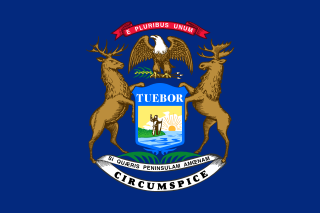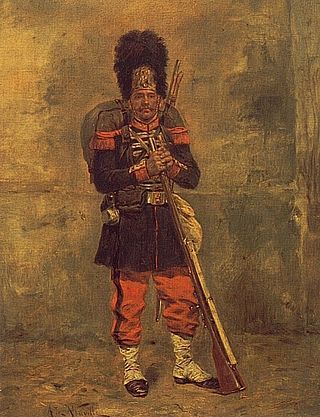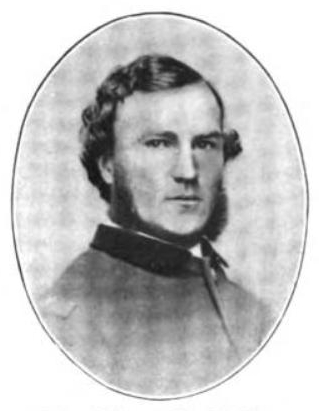
The Zouaves were a class of light infantry regiments of the French Army serving between 1830 and 1962 and linked to French North Africa; as well as some units of other countries modelled upon them. The zouaves were among the most decorated units of the French Army.

The 5th New York Infantry Regiment, also known as Duryée's Zouaves, was a volunteer infantry regiment that served in the U.S. Army during the American Civil War. Modeled, like other Union and Confederate infantry regiments, on the French Zouaves of Crimean War fame, its tactics and uniforms were different from those of the standard infantry.
The 34th Ohio Infantry Regiment was an infantry regiment that served in the Union Army during the American Civil War. It primarily served in the Eastern Theater in what is now West Virginia and in Virginia's Shenandoah Valley region. They are well known for wearing early in the war an americanized zouave uniform which consisted of: A dark blue jacket with red trimming, a pair of sky blue baggy trousers with two stripes of red tape going down vertically, a pair of tan gaiters, and a red Ottoman styled fez with a blue tassel. The uniform lasted at least until 1863 based on photographic evidence.

The 62nd New York Infantry Regiment was an infantry regiment that served in the Union Army during the American Civil War. It is also known as the Anderson Zouaves.

The 4th Michigan Infantry Regiment was an infantry regiment that served in the Union Army during the American Civil War. The 4th Michigan wore a very Americanized zouave uniform. This uniform consisted of a Federal dark blue 4 button sack coat, dark blue chasseur trousers, tan gaiters, and a maroon zouave fez with a light blue tassel.

The Imperial Guard of Napoleon III was a military corps in the French Army formed by Napoleon III as a re-establishment of his uncle Napoleon I's Imperial Guard, with an updated version of the original uniforms and almost the same privileges.

The 5th New York Veteran Infantry Regiment was an Infantry Regiment that served in the Union Army during the American Civil War. The regiment was known as "Duryée‘s Zouaves." The regiment had two uniforms during its time. The first uniform consisted of a medium blue zouave jacket with red trimming, a grey shirt, a red sash with sky blue trimming, red chasseur trousers with yellow piping, a red fez with a yellow tassel, and a white turban. The second and official uniform consisted of a dark blue zouave jacket with red trimmings in the Hawkin Zouave design, a dark blue zouave vest with red trimming, baggy red trousers, a red sash with sky blue trimming,a red fez with a yellow tassel, and a white turban.

The 44th New York Infantry Regiment was a regiment of the Union Army during the American Civil War which was formed up in mid-1861, and mustered in on August 30, 1861. The regiment wore an americanized zouave uniform which consisted of a dark blue zouave jacket with red piping on the cuffs, dark blue trousers with a red stripe, a red zouave shirt, a dark blue forage cap, and a pair of leather gaiters. The jacket had buttons down the front of it which was not part of the original French zouave uniform.

James Glas Grindlay was a Union Army officer in the American Civil War and a recipient of the United States military's highest decoration, the Medal of Honor, for his actions during the Battle of Five Forks. He served with the 146th New York Volunteer Infantry Regiment and commanded that unit for the last year of the war. He twice briefly led his brigade after his superior officers became casualties, and was brevetted brigadier general shortly before the end of the conflict.

The 73rd New York Infantry Regiment was an infantry regiment of Union Army in the American Civil War. The regiment was organized in New York City in May 1861, originally under the designation the Fourth Excelsior Regiment, as a Zouave regiment, known for its unusual dress and drill style. The uniform worn by this regiment consisted of a dark blue chasseur jacket with light blue trim and light blue trefoils on each sleeve, sky blue chasseur trousers with two white stripes down each leg, brown leather gaiters, a light blue kepi with a dark blue band and dark blue piping, and a red Zouave fez with a blue tassel as a fatigue cap. Drawn from the ranks of the city's many volunteer fire companies, the unit was known alternately as the Second Fire Zouaves, after the 11th New York was known as the First Fire Zouaves, and they were also known as the Excelsior Zouaves. Some of the men wore the brass letters "E Z" on the bands of their kepis. Many artists have depicted this regiment also with red shirts with the collar sticking out over the jacket creating a "red collar."

The 10th New York Infantry Regiment was an infantry regiment that served in the Union Army during the American Civil War. It was also known as the McChesney Zouaves or National Guard Zouaves.

The 114th Regiment, Pennsylvania Volunteer Infantry was an infantry regiment that served in the Union Army during the American Civil War. They were notable for their colorful Americanized version of the Zouave uniform worn in emulation of certain French light-infantry units that became world-famous during France's colonization of North Africa, the Crimean War, and the Second War of Italian Independence fought in the years prior to the American Civil War.

The 41st New York Infantry Regiment was an infantry regiment that served in the American Civil War. They were nicknamed De Kalb Regiment. The regiment was formed from German immigrants from both New York and Pennsylvania.

The 155th Pennsylvania Volunteer Infantry Regiment was a Federal infantry regiment that served in the American Civil War in the Army of the Potomac in the Eastern Theater of the conflict.

The 74th New York Infantry Regiment was a Union regiment recruited in 1861, during the American Civil War. The regiment was part of Sickles' Excelsior Brigade and their first commander was sailor and engineer COL Charles K. Graham.
The 37th Regiment Massachusetts Volunteer Infantry was an infantry regiment in the Union army during the American Civil War.

The 9th Louisiana Infantry Regiment or Louisiana Tigers was the common nickname for certain infantry troops from the state of Louisiana in the Confederate States Army during the American Civil War. Originally applied to a specific company, the nickname expanded to a battalion, then to a brigade, and eventually to all Louisiana troops within the Army of Northern Virginia. Although the exact composition of the Louisiana Tigers changed as the war progressed, they developed a reputation as fearless, hard-fighting shock troops.

The 64th New York Infantry Regiment, the "First Cattaraugus Regiment", was an infantry regiment of the Union Army during the American Civil War.

The 165th New York Infantry Regiment was an infantry regiment in the Union Army during the American Civil War.

The 53rd New York Volunteer Infantry Regiment, also known as D'Epineuil's Zouaves or the Poughkeepsie Boys was an infantry unit of the Union Army organised in New York City for service in the American Civil War.













